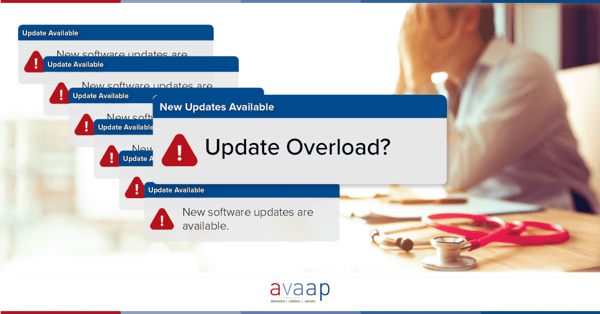Is there such a thing as too many updates?
Since Epic implemented its quarterly upgrade model, many analysts find themselves in a continuous flow of Nova notes, Sherlock tickets, and the balancing act of responding to current users’ requests and concerns as they approach another time for change and adaptation. While quarterly improvements mean fewer changes all at once (and an easier way to keep up with all that may be offered), it does require analysts and end users to accept that their workflows and tools may change more frequently. Whether they see this as a positive or not is dependent on their role and involvement in the system.
When hospitals have their initial EHR install, there tends to be a learning curve for most users. This is inherent in learning a new way to do something and is even more difficult when you’ve done the same thing for a long time, or if you have had to learn a new way to do things many times. The latter is what can cause trepidation once the idea of working in an EHR is long past accepted.

While managers and analysts may find themselves in continuous conversations about potential and approved updates, the inherent issue is that end users do not have those same conversations. Either by choice due to exhaustion of changes, or due to lack of proper communication, end users often face surprise changes, the inability to understand why they are occurring, and how to handle them. Of the 20-some go-lives I’ve assisted at or the six projects I’ve either built, trained, and/or managed, I can only recall one end user at a go-live stating that they felt it was the materials provided by operations that made them feel 100% prepared. Others may have figured things out as they went and not had issues navigating their workflows, but they still had a comment (or three) about what workflows they wished had been better explained or what tools they saw as less than useful.
The key to avoid update exhaustion is to continue the communication efforts that were strong for your initial EHR go-live. Years after an EHR is live, it becomes common for update requesters to push for changes to be made prior to completing the training materials necessary to explain the change to the larger audience. As more personalized requests aren’t always prioritized, the desire to get the change implemented as quickly as you can when an analyst reaches out makes sense. However, anytime a change will affect more than one end user there must be, at a minimum, an email communication explaining the change, if not a tip sheet or live training.
The American Journal of Medicine published a study in 2018 citing EHRs as a key component of physician burnout. It found that EHRs embody all three attributes that contribute to physician burnout: lack of enthusiasm, lack of accomplishment, and cynicism. They call out meaningful notes as one way to battle this burnout, as endlessly cloning notes to ensure legal requirements are met in case of an audit simply isn’t fulfilling. The same philosophy can be applied regardless of task or hospital role: if the effort doesn’t seem meaningful to the user, the user will face their work in the EHR with skepticism and is more likely to burn out.
When it comes to updates and upgrades, the age-old mentality of “if you build it they will come,” does not work. If no one knows that there is an improvement they can take advantage of, or if the advantage is never explained to them, the work efforts on behalf of operations, the analysts, and the end users is wasted.
In the end, an upgrade cannot be considered a “win” if the build is successfully implemented and there are no immediate concerns by end users or departments. An upgrade needs to also be well understood by the users and, most importantly, effectively and meaningfully used.
Stephanie Tussing is a senior consultant at Avaap. She helps healthcare organizations optimize their healthcare systems to improve efficiency and accuracy of documentation so clinicians may gain time back to focus on their patients.

